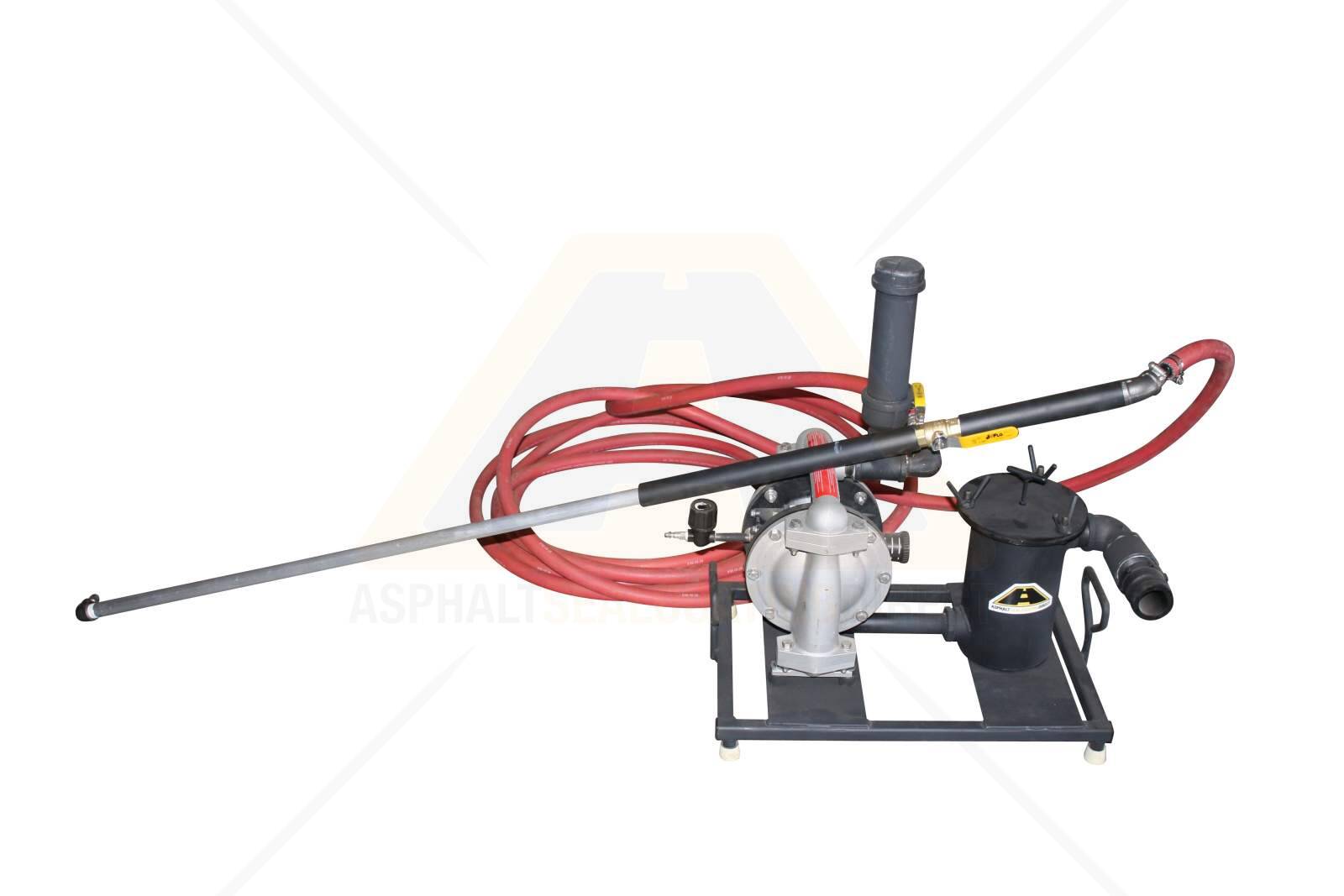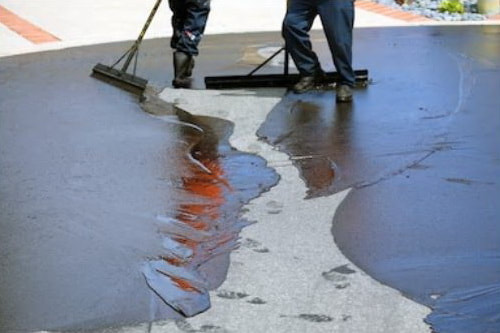Elevate Commercial Allure: Hot Mix Asphalt Sealing for Angled Parking Lots
Elevate Commercial Allure: Hot Mix Asphalt Sealing for Angled Parking Lots
Blog Article
Hot Mix Asphalt: A Sustainable Remedy for Sidewalk
Hot Mix Asphalt (HMA) has actually emerged as a leading lasting option for sidewalk remedies, using a myriad of environmental advantages and innovative modern technologies. Its capability to minimize and recycle materials power intake provides an engaging instance for its adoption in roadway construction tasks. Moreover, the lasting efficiency and longevity of HMA make it a preferred choice for infrastructure growth. As the demand for environmentally friendly building practices expands, discovering the nuances of HMA's sustainability can offer valuable insights into the future of pavement options.
Environmental Advantages of Hot Mix Asphalt

Additionally, Warm Mix Asphalt aids to reduce metropolitan heat island effects. Its dark color absorbs sunlight, lowering the amount of warm mirrored back right into the environment compared to lighter-colored pavements. This can lower ambient temperature levels in metropolitan locations, reducing the demand for a/c and ultimately reducing power consumption.
Additionally, Hot Mix Asphalt adds to improved stormwater monitoring. Its permeable nature allows water to charge and penetrate the sidewalk groundwater products, lowering overflow and the danger of flooding. These ecological advantages make Hot Mix Asphalt a sustainable option for leading roadways and freeways.
Energy Efficiency in HMA Manufacturing
Is energy efficiency an important aspect in the manufacturing of Hot Mix Asphalt (HMA)? Power plays a substantial function in the production of HMA, impacting both price and environmental sustainability. One crucial element of energy effectiveness in HMA production is the usage of cozy mix asphalt (WMA) modern technologies.
Moreover, improvements in plant modern technologies have led to more energy-efficient HMA manufacturing procedures. Modern plants are created with functions like recycled asphalt sidewalk (RAP) processing abilities, reliable burner systems, and enhanced insulation, all adding to power savings. By maximizing power usage in HMA production, the market can lower its carbon impact while keeping high-quality sidewalk materials. Energy efficiency is, as a result, an important factor to consider in guaranteeing the sustainability of Hot Mix Asphalt manufacturing.
Recyclability of Hot Mix Asphalt
The recyclability of Hot Mix Asphalt (HMA) is a pivotal element of its sustainability and long-term ecological influence. HMA is one of one of the most recycled products in the United States, with over 100 million lots of recovered asphalt sidewalk (RAP) being recycled annually in brand-new pavement construction. Recycling HMA uses several ecological advantages, such as minimizing the demand for virgin materials, decreasing energy intake throughout manufacturing, and decreasing the amount of waste sent to landfills.
The procedure of recycling HMA includes crushing the existing pavement, squashing it into smaller items, and mixing it with brand-new aggregate and asphalt binder to produce a recycled mix. This recycled mix can typically carry out in addition to and even much better than traditional HMA, while calling for fewer raw products and generating reduced greenhouse gas exhausts. By including RAP into brand-new sidewalk projects, road agencies can save natural deposits, reduce expenses, and minimize the ecological impact of roadway construction and upkeep tasks. Generally, the recyclability of HMA plays a substantial role in advertising sustainable practices within the pavement industry.

Long-Term Performance of HMA
Asphalt pavements show durability and durability over an extensive duration, reflecting the long-lasting efficiency of Warm Mix Asphalt (HMA) The long life of HMA can be credited to its capacity to withstand hefty traffic lots, severe weather, and the impacts of aging. Research studies have revealed that well-designed and appropriately built HMA pavements can last for 20 years or more with regular maintenance. The key to optimizing the lasting efficiency of HMA hinges on utilizing high-quality products, adhering to finest practices in construction, and executing effective upkeep techniques. Proper drain, regular evaluations, and timely repairs are important for protecting the structural integrity of HMA pavements gradually. Furthermore, innovations in HMA modern technology, such as using polymer-modified binders and cozy mix asphalt, have even more enhanced the durability and this hyperlink long life of HMA pavements. By prioritizing high quality building and maintenance practices, HMA proceeds to verify itself as a sustainable and cost-effective option for long-lasting sidewalk framework.

HMA: Sturdiness and Sustainability
Demonstrating both resilience and sustainability, Warm Mix Asphalt (HMA) has actually become a keystone in the construction of lasting pavement infrastructures - hot mix asphalt. HMA's sturdiness stems from its capability to hold up against hefty lots, rough climate condition, and high website traffic quantities, making it a reliable choice for streets, freeways, and airport paths. The make-up of HMA, which commonly includes accumulations, binder, and filler, plays an essential role in boosting its long life and resistance to tear and wear
Furthermore, HMA's sustainability exists in its recyclability and energy-efficient production process. The capability to reuse reclaimed asphalt pavement (RAP) in brand-new HMA blends lowers the need try this out for virgin products and minimizes the ecological effect of pavement building and upkeep. In addition, the energy effectiveness of producing HMA lies in its lower blending temperature levels contrasted to other sidewalk materials, leading to minimized energy intake and greenhouse gas exhausts.
Final Thought
To conclude, warm mix asphalt (HMA) offers a lasting service for pavement with its eco-friendly features. HMA's recyclability, energy efficiency in production, and long-lasting durability make it an environment-friendly choice for roadway construction. By preserving all-natural resources, lowering waste, and decreasing greenhouse gas emissions, HMA plays a critical role in advertising sustainability in infrastructure advancement. Its ability to alleviate city heat island effects additionally highlights its relevance in creating ecologically aware and resistant pavement systems.
HMA is one of the most recycled materials in the United States, with over 100 million lots of redeemed asphalt sidewalk (RAP) being reused every year in brand-new pavement building and construction.The process of reusing HMA entails crushing the existing sidewalk, crushing it right into smaller items, and webpage mixing it with brand-new accumulation and asphalt binder to develop a recycled mix.Asphalt pavements demonstrate resilience and durability over a prolonged duration, reflecting the lasting efficiency of Warm Mix Asphalt (HMA) In addition, innovations in HMA modern technology, such as the use of polymer-modified binders and warm mix asphalt, have additionally improved the longevity and longevity of HMA pavements. The capability to recycle recovered asphalt sidewalk (RAP) in new HMA mixtures minimizes the need for virgin products and reduces the ecological impact of pavement building and construction and maintenance.
Report this page